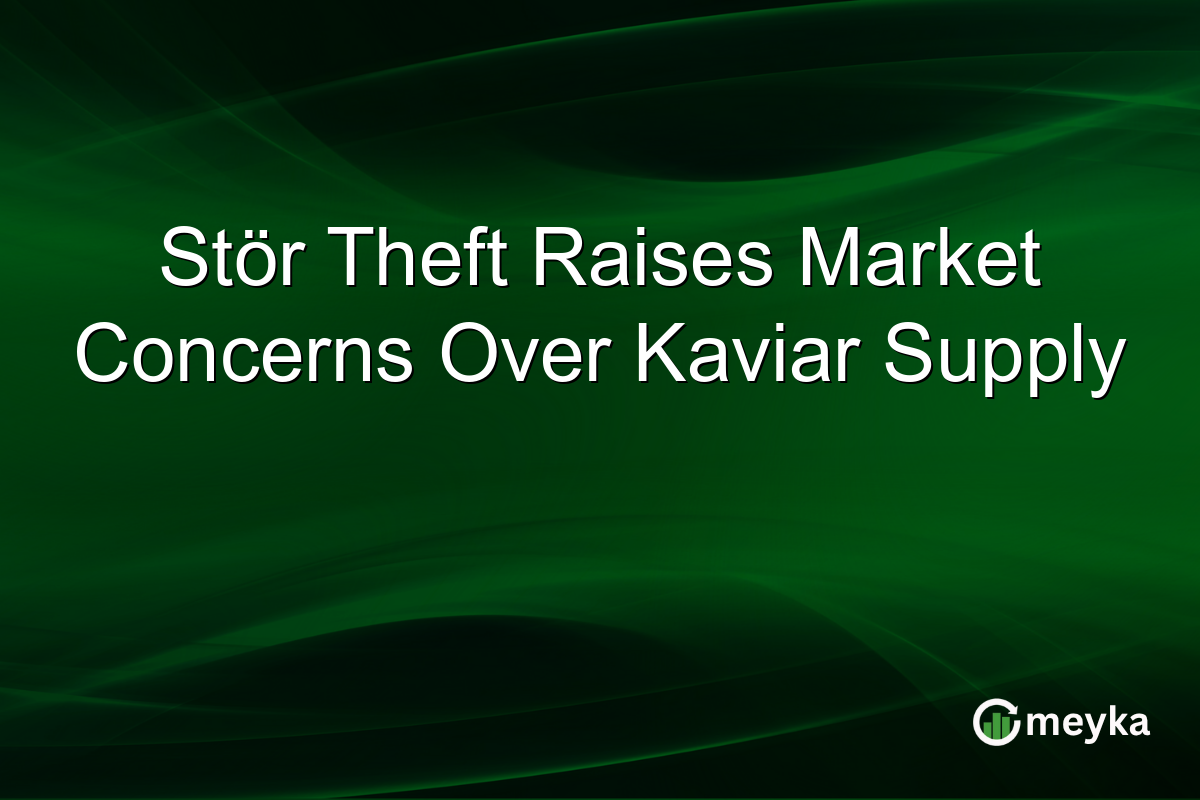Stör Theft Raises Market Concerns Over Kaviar Supply
The recent theft of 40 sturgeons from fish ponds in Vogtland is causing significant disruption in the kaviar market. With a calculated financial impact of around 520,000 Euros, this event underscores the susceptibility of aquaculture investments to unforeseen challenges. As consumers and investors react to these developments, the industry faces potential supply shortages, affecting global kaviar availability and market dynamics.
The Vogtland Sturgeon Theft
The audacious theft occurred in Vogtland, Germany, involving the disappearance of 40 prized sturgeons valued at 520,000 Euros. This incident highlights the vulnerabilities inherent in fish farming investments. German police are actively investigating the case, reflecting heightened security concerns across aquaculture businesses.
Stör Diebstahl raises market tensions
Such incidents are rare, but their impacts are profound. The loss of these breeding fish not only affects local businesses but also ripples through the global kaviar market.
Impact on the Kaviar Supply
The theft leads to tangible concerns within the kaviar supply chain. Losing such a significant number of sturgeons directly affects production schedules and market availability. This event comes amidst rising global demand for kaviar, amplifying potential shortages.
As supply dwindles, prices could skyrocket, affecting consumer behavior and market stability. Industry experts are urging tightened security measures and more robust insurance policies for aquaculture operations. These measures could provide a safety net for investors facing similar threats.
Economic Implications and Industry Response
Peter Meinel, a leading figure in the aquaculture sector, emphasizes the need for resilience strategies. The theft underlines the economic impact that such criminal activities can have, not just on local farms but also on international trade.
The kaviar market reacts sensitively to supply disruptions. Both small-scale and major market players must adapt quickly to safeguard their investments and maintain supply chains. Increased investments in security and technology for monitoring fish stocks are crucial steps forward.
Authorities’ swift reaction and increased security measures in Vogtland set the stage for a potentially faster recovery, but the incident leaves a mark on investor confidence.
Final Thoughts
The Vogtland sturgeon theft serves as a stark reminder of the fragility within the kaviar supply chain. As the industry grapples with potential shortages, aquaculture businesses are forced to reconsider their security and investment strategies. The pursuit of robust defense mechanisms, alongside adaptive market responses, becomes vital. Investors and stakeholders must stay vigilant, ensuring the stability and growth of this lucrative market. With proactive measures, the kaviar industry can mitigate risks and ensure a resilient future.
FAQs
The theft of 40 sturgeons significantly disrupts the kaviar supply, leading to potential shortages and price increases. This incident highlights the need for enhanced security in the aquaculture sector.
Supply shortages often lead to increased prices, impacting consumer accessibility and market stability. The industry may invest in security and adaptive strategies to manage these disruptions.
Enhanced security, such as surveillance technology and stricter access controls, can help deter thefts. Additionally, investing in insurance and risk management strategies is crucial for aquaculture operators.
Disclaimer:
This is for information only, not financial advice. Always do your research.






